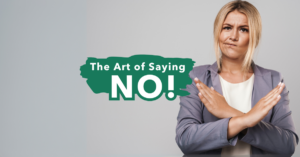You may or may not know the work of Umair Hague. If you don’t, I encourage you to. Umair is an economist, writer, and very deep and provocative (but readable) thinker on capitalism and creating prosperity in the 21st century. Today I’m going to summarize, as difficult as that is, his book, The New Capitalist Manifesto: Building a Disruptively Better Business. I’ll not do it full justice, so if you are intrigued I’d encourage you to read the full book, or at a minimum follow his blog in the Harvard Business Review.
In the book, Umair is an advocate of capitalism, yet asserts that the capitalist ways of the industrial era are neither healthy nor sustainable. The analogy he paints is that in the industrial era, companies operated as if they were in a “Game Preserve” – where resources were abundant, space expansive, and squashing your competition at any cost were modus operandi. He advocates that organizations need to operate from an “Ark” perspective, where resources are limited, dependencies are critical and working together is a must.
Umair urges organizations to move from creating “thin” value to creating “thick” value. His book provides a framework for this shift – but let me merely describe the difference.
Thin value is short-term, singular-focused, and pushes many costs onto others, including future generations. His example of burgers in America illustrates thin value really well. Let’s say you pay $3 for an average burger and the company has $2 in COGS and makes a profit of about a buck. However, the total cost of the burger to produce and deliver is much higher due to things like the subsidized water to produce the beef, government benefits to low wage employees, and tax incentives for farmers and other businesses in the value chain. Then you can add to that the future costs, such as medical costs for obesity and heart disease, or the natural resource costs from beef production. So, by the author’s calculations that $3 hamburger may have an actual cost of $30 – to society and to future generations.
This, Umair would advocate, is “thin” value, or artificial value – gained through harm to or at the expense of people, communities or society. Thin value is what happened when banks bundled risky loans and sold them as consolidated “assets”, that were in reality worthless, bringing the country to the brink of financial collapse, even though the institutions themselves (and the financiers within them) profited greatly.
“Thick” value, by contrast, is value that matters – that lasts and that multiplies. Profits are gained from activities that have benefits that accrue for people, communities, and the planet, in ways that are meaningful, authentic and sustainable. This is value creation for the long term, for wide swaths of folks, and for the natural environment.
Umair provides many examples of companies moving into providing this type of “thick” value or what he would call constructive capitalism. Here are a few:
- Nike is finding ways to reclaim, recycle and reuse materials in all parts of its value chain, turning it instead into a value cycle, which is continually replenished with materials that cost less and do far less damage to the environment.
- Threadless, through its unique business model, has found a way to only produce what is needed when it is needed by deeply knowing what customers value and will buy, and along the way also building communities of artists.
- Google’s philosophy of data liberation creates boundless value inside and outside the organization through opening, rather than closing, the access to data. The goal is to make it easy to move data in and out of Google products. Contrast this with Microsoft – whose goal is to have their products be the ONLY ones you are able to use.
- Grameen Bank and its founder, Muhammad Yunus, who lend small amounts of money without collateral to the rural poor to seed small businesses. The bank is owned by the poor and has been profitable, with the exception of 3 years, since its founding in 1976. It has provided loans to 8.4 million people in India (primarily women), enabling 65% of them to clearly improve their socioeconomic condition. The bank has distributed over $11 billion in micro-loans with an amazing recovery rate of 96.7%.
Hague is clear that no one company has figured it out completely, but provides rich examples of the five cornerstones that can move companies into sustainability and this “new” capitalism.
I’ll end with Umair’s vision of a capitalism that is possible and indeed, necessary, for long term sustainability:
“A capitalism where companies, countries, and economies reach a higher apex of advantage – one where bigger purpose rouses untapped human potential of every employee, customer and future customer; instead of deadening it. One where fiercer passion makes innovation as natural as drawing breath, spontaneously combusting with the spark of creativity instead of dousing its flame with the lowest common denominators. One where deeper meaning replaces the drab grind of repetition with challenging and compelling work that elevates the soul. Where more authentic power flows from shared principles instead of (yawn) sweeter carrots and heftier sticks. Where greater resourcefulness means being not the natural world’s conqueror, but its champion. Where higher quality value is created by doing stuff of greater worth. And ultimately, where companies compete not just to change the rules, but to change the world.”
Umair raises both interesting and important questions – for consumers, entrepreneurs, and business leaders. They may not be comfortable, but they are compelling. And considering how to view capitalism as an act of creating deep, broad, and lasting value over the long term is certainly worth struggling with.





One Response
Thanks for sharing; sign me up for that world! David Cooperrider introduced me to the power of appreciative inquiry in grad school 20 years ago; I’ve been searching for the environment ever since.
Comments are closed.